
REVIEW – Ever since Covid hit in 2020, I have not had a chance to take a multi-day vacation outside of the state of Texas where I live. I am stoked about a 5-day hiking trip I planned for Utah in May. One of the things that I always carry in my backpack is a first aid kit and a water filtration system. I was excited to see the new LifeSaver Wayfarer water filtration system come up for review. I have a very old water filtration system I purchased in 2001, and I think it is time for an upgrade. Let’s see if it meets my expectations for lightweight, easy-to-pack, and safe-to-drink water.
What is it?
The LifeSaver Wayfarer is a small and lightweight water filtration system. It has replaceable filters capable of filtering up to 5,000 liters of water.
What’s in the box?
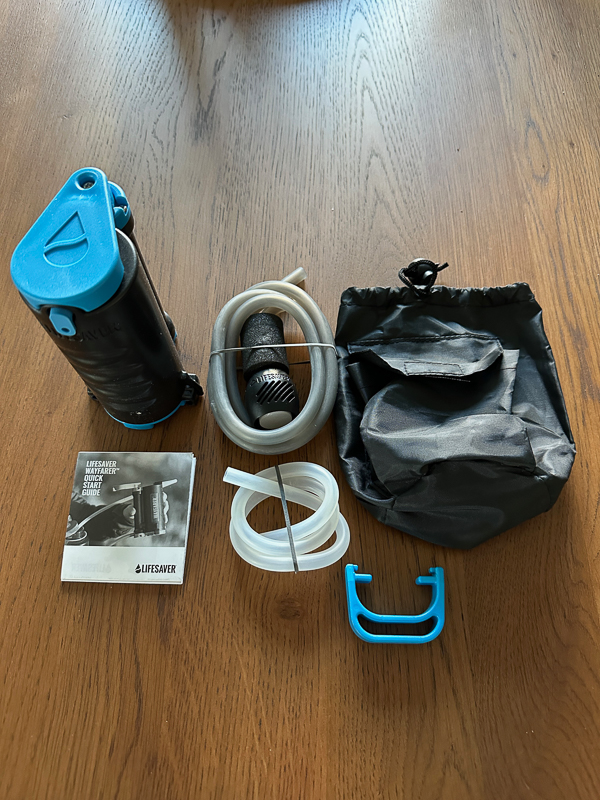
- 1 x LifeSaver Wayfarer water purifier
- 1 x user manual
- 1 x inlet hose with float and weight
- 1 x outlet hose
- 1.x storage bag
- 1 x handle to remove the filter cartridge
Hardware specs
- Replaceable Ultrafiltration Cartridge – removes:
- Bacteria – 99.9999%
- Virus – 99.999%
- Cysts – 99.99%
- Purifies up to 5,000 liters / 1,320 US gallons
- Replaceable Activated Carbon Disc – effective up to 100 liters. Reduces chemicals and heavy metals such as chlorine, lead, nickel, and cadmium. Improves taste and odor
- Initial flow rate: 1.4 L/min
- Dry weight: 323g / 11.4 oz
- Includes 4.2ft / 1.3m Scavenger In Hose for drawing water directly from the source and 1.6ft / 0.5m Out Hose for filling the container
- Rotating pump handle for ease of use with either hand
- FailSafe technology – Once the filter membranes are blocked, water cannot pass through, keeping users safe
- Product materials and water effluent, both BPA and BPS free
Design and features
The LifeSaver Wayfarer water purifier is a compact unit, only six inches tall and three and a half inches wide. One side of the unit has the Wayfarer name on it. The blue part at the very top is the pump handle.
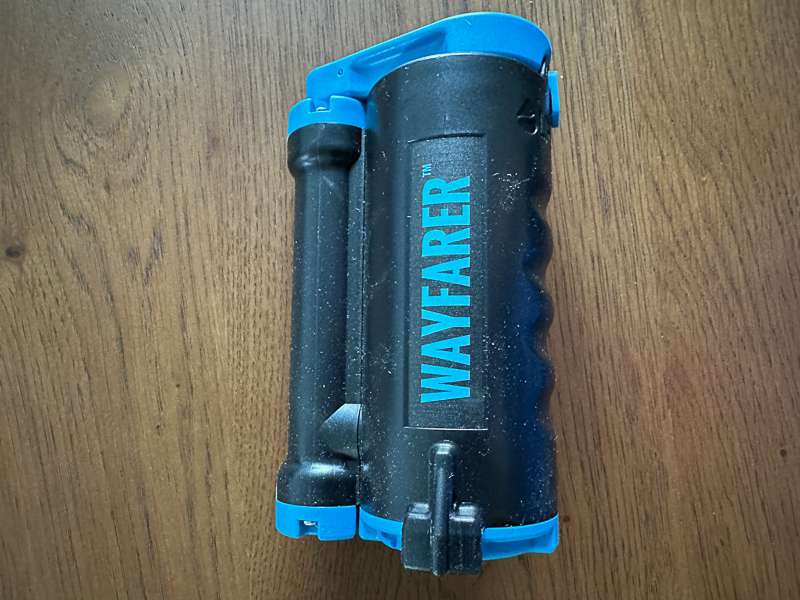
The front side of the unit at the top has a blue rubber cover over the outlet port just above the LifeSave logo.
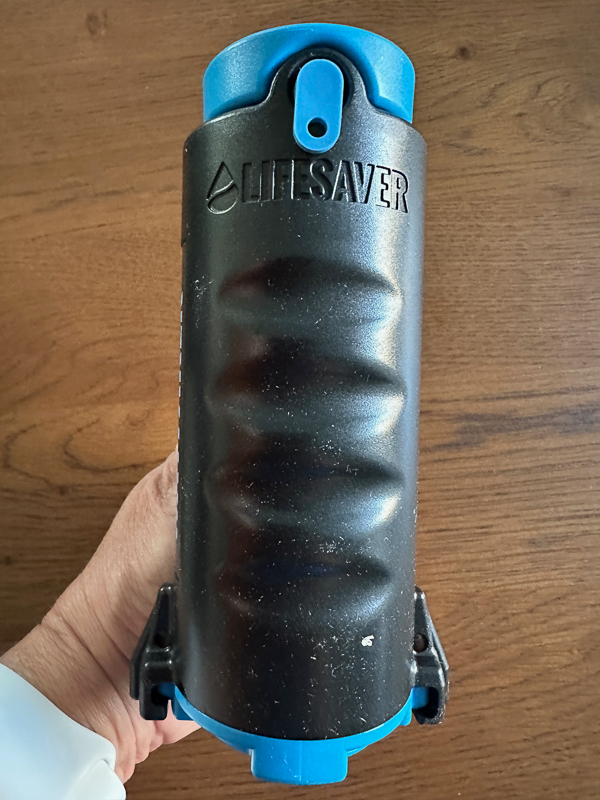
Removing that rubber cap reveals the output port.
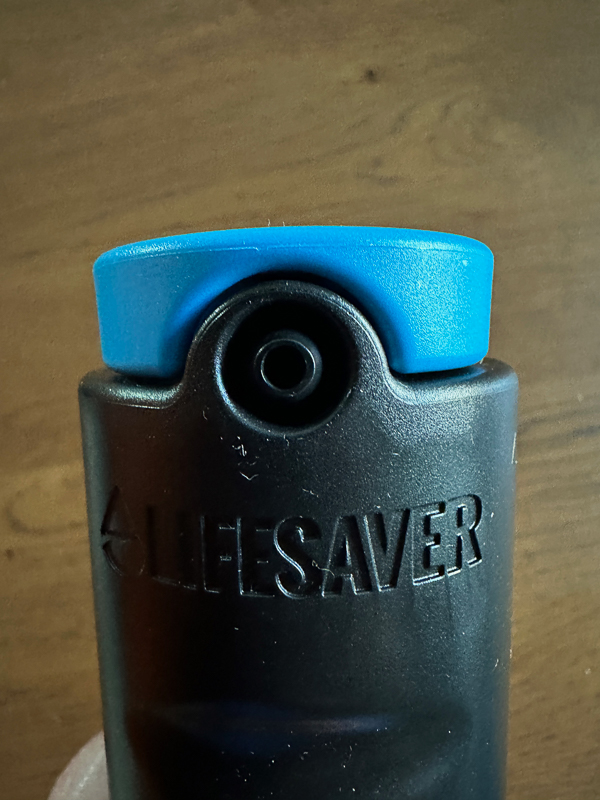
At the bottom of the side, opposite the output port, is the input port. It does not have a plug since dirty water comes in at this point.
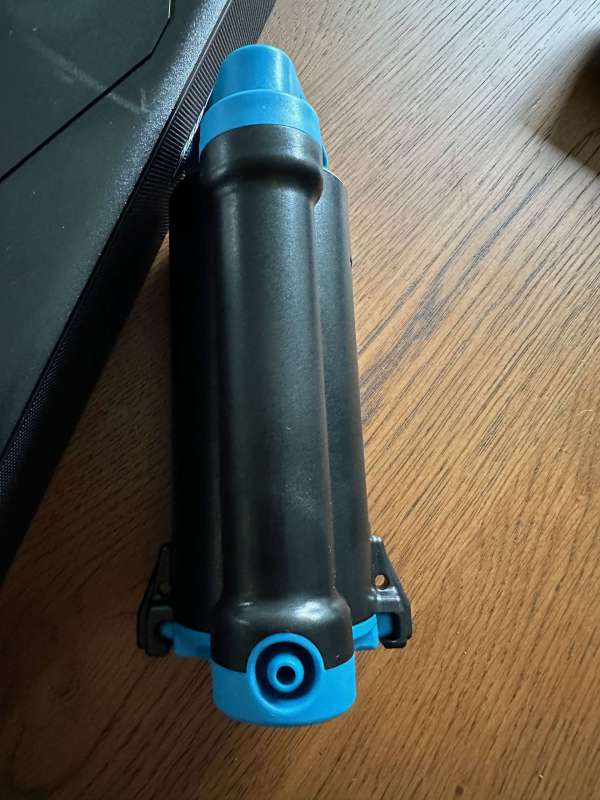
The opposite side of the Wayfarer logo side has no ports.
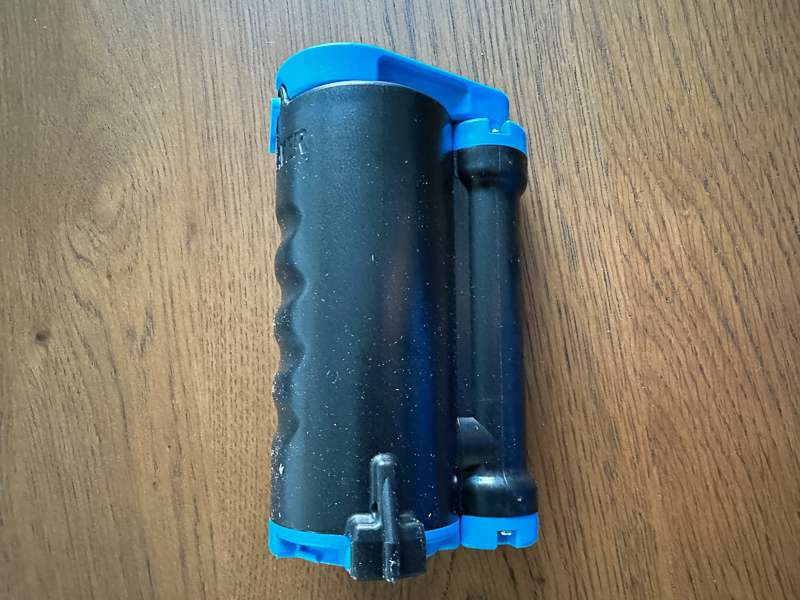
At the bottom of the LifeSaver Wayfarer water purifier, you will find the access cap to access the filtration cartridge and the carbon disk.
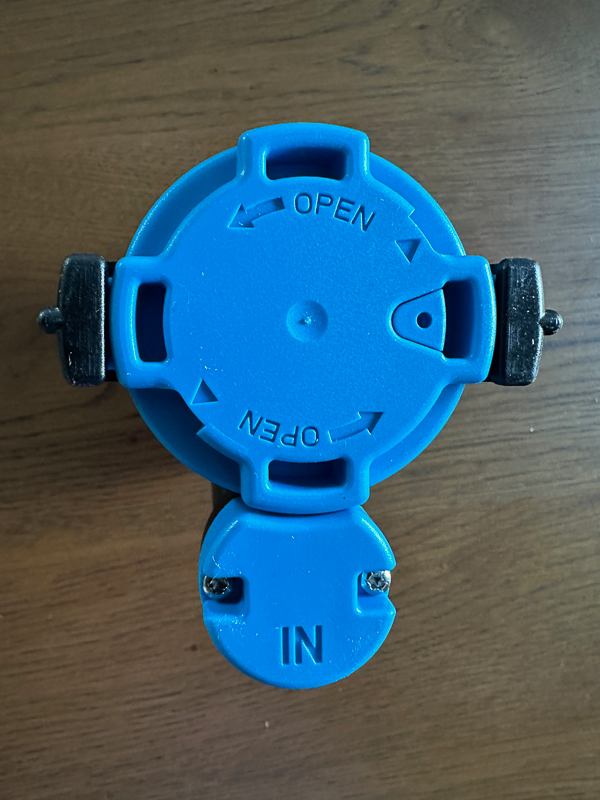
Last but not least is the top of the water purifier. The blue part is the handle.
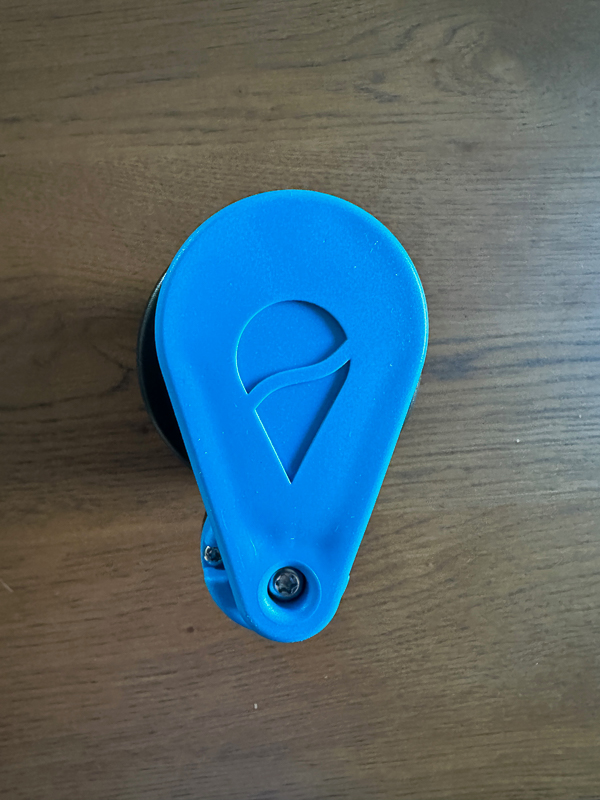
The next two pictures show the handle in its extended position. You can turn the top of the handle in any direction. This is a nice feature because I have had to contort myself in some unusual positions to access water.
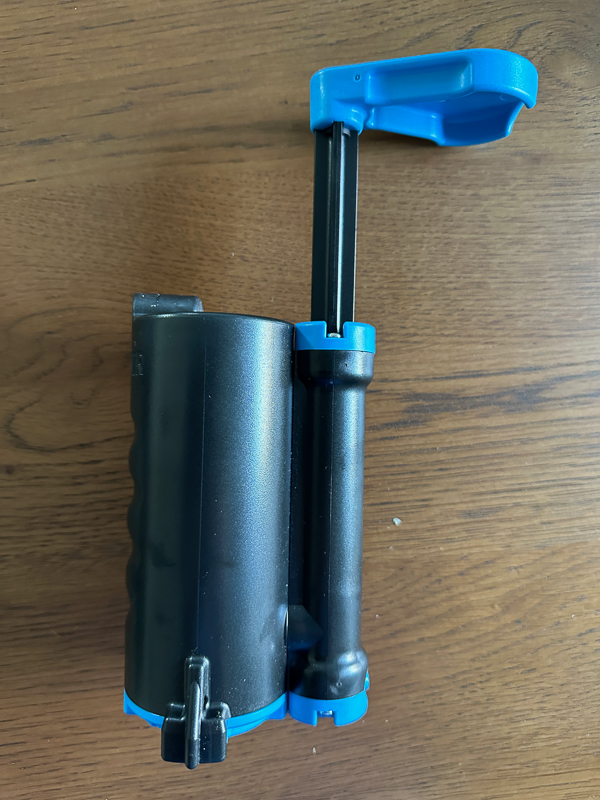
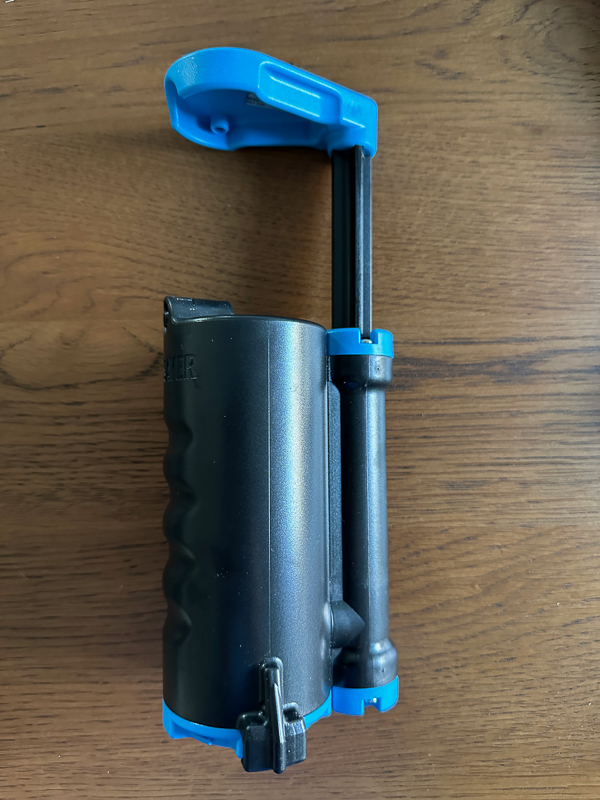
Underneath the LifeSaver Wayfarer water purifier’s handle, you will find the serial number for the water purifier, plus a hole where you can store the plug for the output port. The first picture shows the plug in place, and the second shows where it can go. Again, I think this is a great feature. It would be easy to lose that cover for the output port, and they give you a secure place to put it while you filter water.

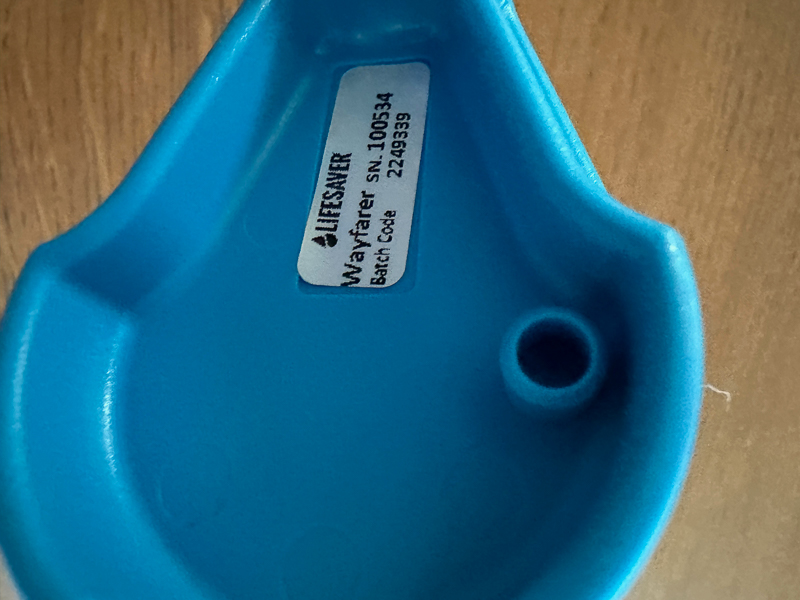
This next picture shows you the intake hose. At the bottom of the hose is a plastic cap that has holes to filter out large debris. Above that, you can see foam that allows the hose to float at the top of the water and let the cap at the bottom stay suspended. My previous filtration unit did not have that foam piece. It simply lay in the water, often at the bottom of the sandy or rocky stream where the hose could suck in debris.
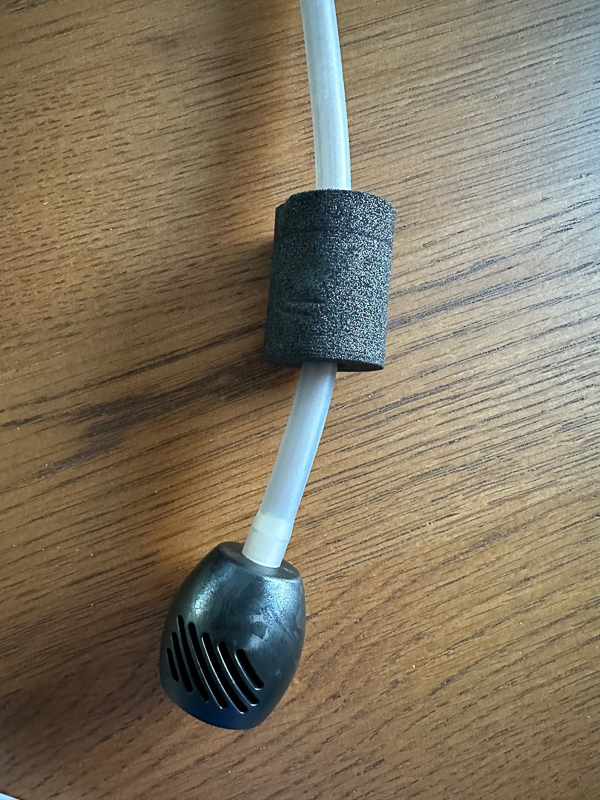
Next, I wanted to show you what the filtration cartridges looked like and how to access them. You first press the button to the right of the word ‘open’ to release any pressure in the unit. Then you notch the provided handle into the bottom of the filtration unit. You then twist the handle counterclockwise. Once the bottom releases, you pull up on the handle to bring out the cartridge.
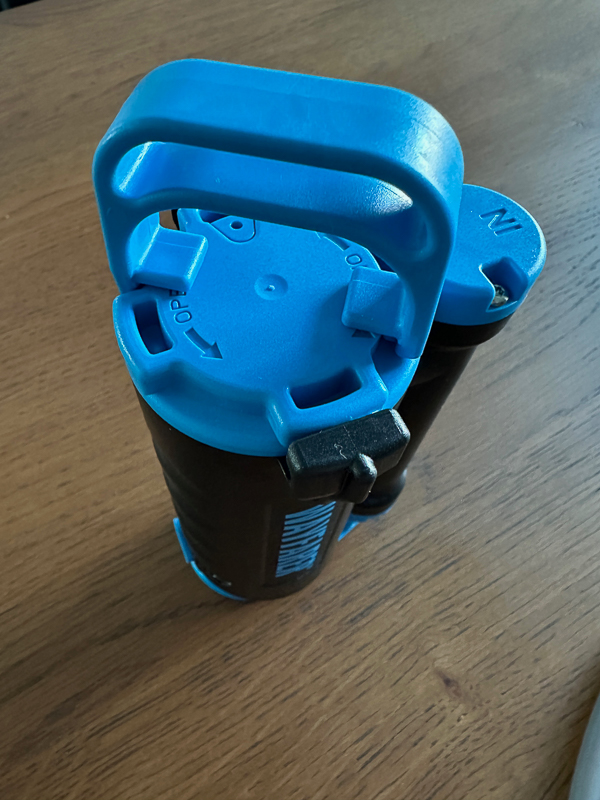
Here is a picture of the cartridge when it was removed from the filter. The handle is still attached. Notice the rubber o-rings at the top and bottom. They were nicely lubricated.
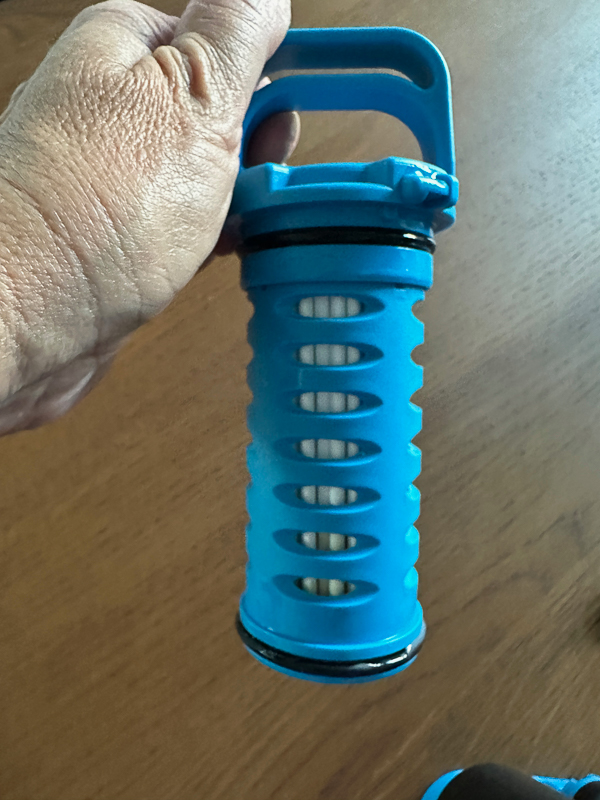
Here is a picture of the bottom of the filtration cartridge.
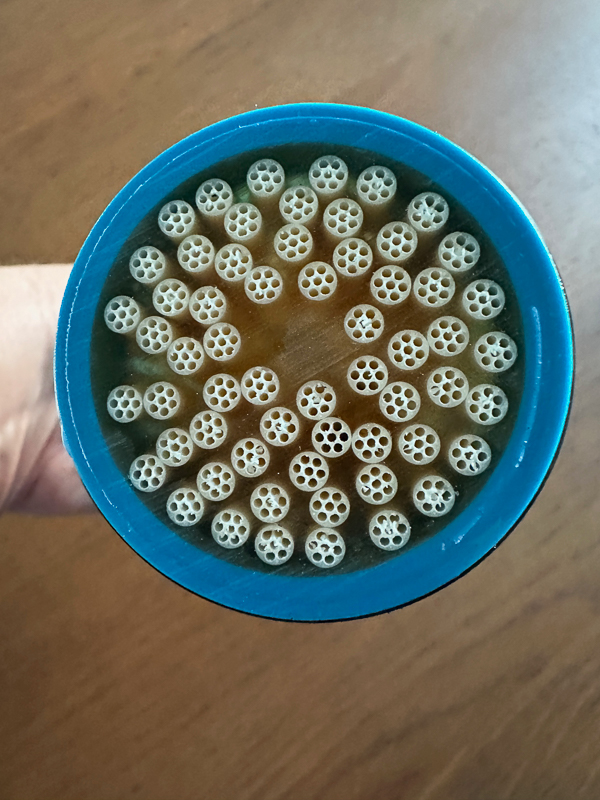
Sitting on top of the cartridge at the very top of the unit, the last thing filtered water passes through is a carbon disk. Both the disk and cartridge are replaceable. There is a white rubber ring around the carbon disk. The disk pops out of the ring, and you put in a new one when needed.
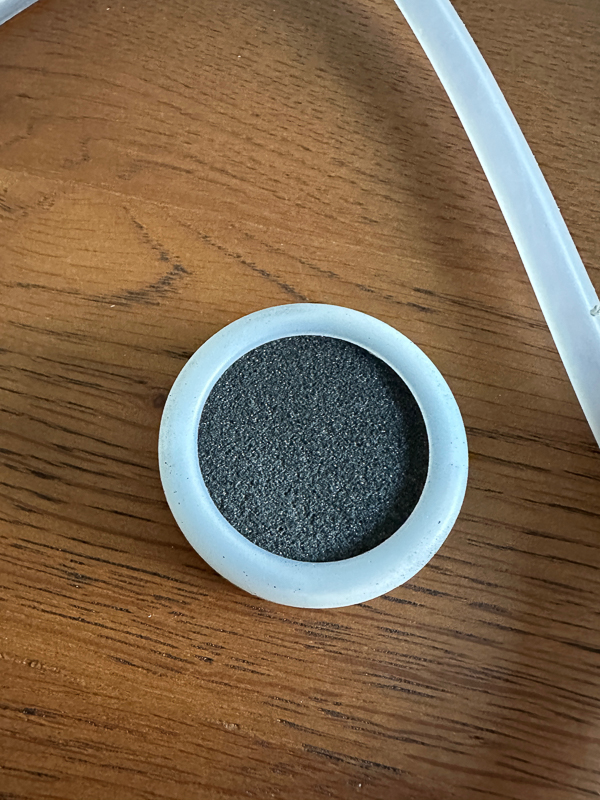
Setup
Before using the LifeSaver Wayfarer water purifier in the wild, you need to prime it with clean water. As pictured below, I filled a water jug with tap water and connected the input and output hoses.

Here is a shot of the input hose in the jug. I adjusted the foam floater to allow the bottom filter to sit suspended in the water.
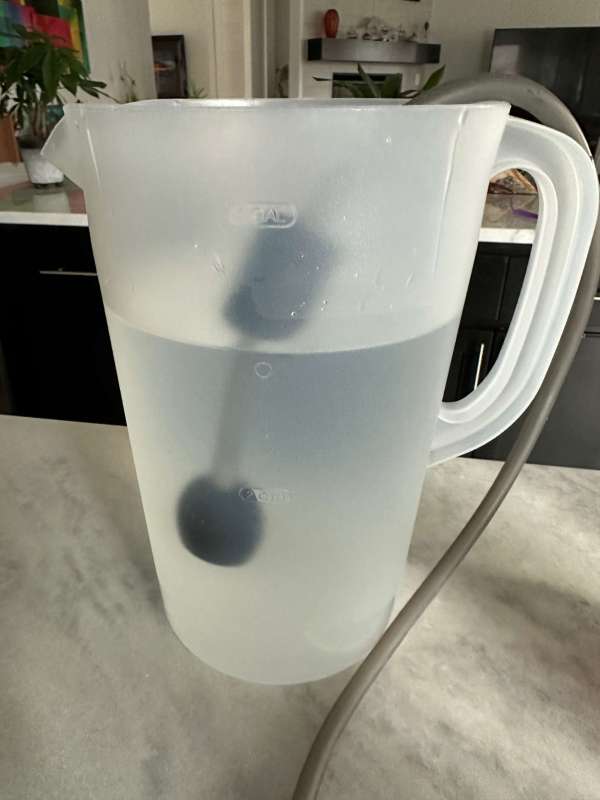
Below are the steps for priming. These need to be done every time you replace the filtration cartridge in the unit.
- Attach Scavenger In Hose to the ‘IN’ spigot (Grey – for dirty water).
- Attach Out Hose (Clear – for clean water) to the ‘OUT’ spigot, aiming the other end of the Out Hose at a suitable drain point.
- Drop the Scavenger In Hose into clean water. Use tap water if possible. Make sure the pre-filter is fully submerged.
- Pump 4 times. Wait 2 minutes.
- Ensuring the pre-filter is still fully submerged, pump slowly. Water should begin flowing through the Out Hose. Use the PRV (as per page 7) to aid the initial flow. Continue until approximately 8 liters of water have passed through the filter (approx. 6 minutes of pumping).
- Taste the water now coming from the Out Hose. If the water tastes sweet, continue pumping water through the unit until the sweet taste goes. The sweet taste comes from the vegetable-based glycerine used as a preservative for the UF hollow fiber membranes. This is safe to consume, but all the glycerine must be flushed out of the filter once the priming process has started. Once all the glycerine is flushed away, your Wayfarer™ is ready to use.
Performance
I took the LifeSaver Wayfarer water purifier to a local lake to test it out. We are in a severe drought (several years now with well below-average rainfall), so I had no running stream that was convenient to test with. I placed the input hose into the lake water from the end of a dock. I then pumped the water into a water bottle. I was impressed with the water’s taste. It was clean and fresh, and the water looked nothing like the original lake water. I was also happy to note that I did not get sick anytime after drinking the water.
I love how lightweight the unit is and that it comes with its own storage bag. I keep the output hose in the outer pouch away from the main unit and input hose. The user manual also gives you steps to ensure your cartridge membrane is working correctly. It basically involves pumping water in the unit, removing the input hose, and pumping four times to introduce air into the filter. You should not see any air coming out of the input port. They also recommend removing the cartridge and rinsing it off if you use the filter in dirty water.
What I like
- Small and lightweight
- It comes with its own storage bag
- Replaceable filters
- The input hose allows for the suspension of the intake filter.
- The handle rotates to allow for easy pumping in various positions.
What I’d change
- Nothing!
Final thoughts
I am going to enjoy taking the LifeSaver Wayfarer water purifier on my Utah hiking vacation. It is small and lightweight and gives me an extra sense of security when hiking so that I can have enough drinking water. If you are looking for a water filtration unit for your next outdoor adventure, I highly recommend the Wayfarer.
Price: $104.99. Replacement cartridge – $57.99, Replacement carbon disk – $26.49
Where to buy: LifeSaver
Source: The sample of this product was provided by LifeSaver.



Gadgeteer Comment Policy - Please read before commenting
you don’t say when the cartridge and/or carbon filter need to be changed.